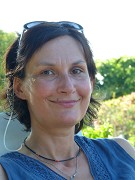Authors
Paul Weber1; Marina Lupishko2; 1 Universität des Saarlandes, Saarbrücken, Germany; 2 Conservatoire de Lisieux, France, FranceDiscussion
One of the most opaque arguments of Kandinsky's theoretical writings before the First World War can be found in his autobiography Rückblicke of 1913, where on p. xxv he argues against his critics seeing him as "overthrowing" (umstoßen) old painting. He also talks about "virtuosity", applying this musical idea to his paintings. The problem remains to establish what this idea means for the works of Kandinsky in general, both theory and practice. Reconstructing Kandinsky's musicological argument of "virtuosity" as "creative interpretation" gives us a chance to understand his project of "monumental art" (Gesamtkunstwerk), paradoxally, in a new light of a painterly framework, since this idea lies at the very core of his idea of total work of art. Within the new theoretical framework, we will try to analyze one of the most prominent paintings which is usually cited as an example of Kandinsky's involvement in Arnold Schönberg's music and theories, "Impression III" (The Concert, 1911). Our analysis gives a new perspective on what the painter understood by "virtuosity", "creative interpretation", and "Yellow Sound", a reference to one of his unrealised pre-WWI Gesamtkunstwerk projects, the experimental theatre piece Der Gelbe Klang (1909-12). 

